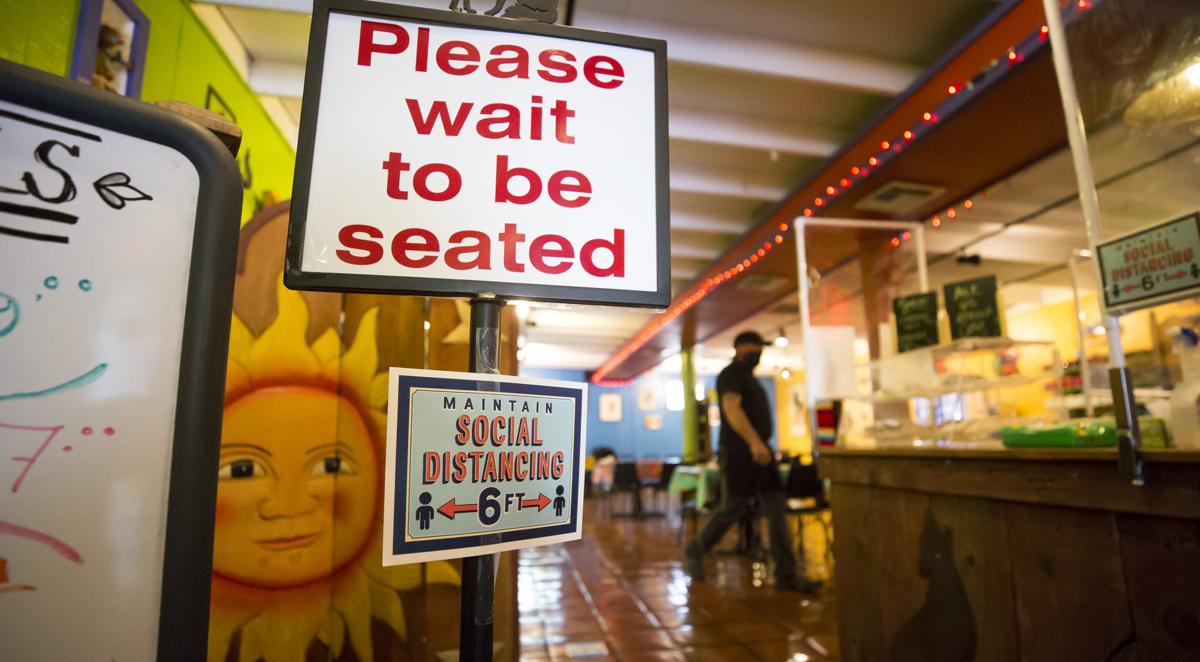PHOENIX — Customers aren’t exactly filling the places up.
But new figures from OpenTable suggest that Arizonans are once again warming to the idea of dining out — and doing so with more exuberance than much of the rest of the country.
The most recent data from the organization that helps people book reservations finds that dine-in seating at the restaurants surveyed is down about 60% from the same time a year ago.
That’s not great. But it comes after weeks of no in-house dining following the March 20 order from Gov. Doug Ducey allowing restaurants to provide only curbside and takeout service. It took until May 11 for the governor to partly lift the order, allowing dine-in services with new service protocols and limits on numbers of diners.
And that 60% reduction is better than most of the rest of the country, where dine-in service, on average, is still about 87% below last year. Steve Chucri, president of the Arizona Restaurant Association, said it appears that only South Carolina and Alabama, among states that shuttered restaurants, are doing better.
What’s keeping the numbers from being better?
Chucri said some of it is a matter of physics and geography.
He noted the requirement for physical distancing between dining parties. So a restaurant has to get rid of perhaps half of its tables to make that a reality.
At the same time, Chucri said, some restaurants are waiting until the next phase to reopen to diners, when the seating requirements are less stringent. Here, too, he said, distancing can matter.
For example, he cited one Phoenix restaurant that under normal circumstances would have 30 tables. But the size and configuration, Chucri said, might currently allow for perhaps just eight.
“So the models aren’t there to make the money in order to bring everyone back in,” he said.
That’s not all.
“Others are wanting to make sure all the wrinkles are ironed out in the supply chain issue that we’ve been experiencing,” Chucri said.
And even when restrictions are fully lifted there’s the question of whether people are going to feel comfortable enough to go out and sit down at a fancy restaurant or even a fast-food table.
“I think some of it’s going to be word of mouth,” Chucri said, as those who have gone out spread the word about the experiences they have had.
And then there’s the question of what people read in the paper. Chucri said a story about someone contracting COVID-19 from going out to eat would get a lot of attention.
“But, so far, so good,” he said.
All this has financial implications.
Chucri figures the ban on in-house dining has cost restaurants statewide a collective $27 million a day in lost revenues.
What that left them, he said, is what some were able to make with takeout and curbside services, a figure he said amounts to just 10% of what they were making before.
Photos: Tucson's popular Tumamoc Hill re-opens with some changes
Tumamoc Hill re-opens
Updated
Visitors wearing masks finish their hike up Tumamoc Hill in Tucson, Ariz. on May 25, 2020.
Tumamoc Hill re-opens
Updated
Sarah Salinas, left, and her father Frank Salinas walk down Tumamoc Hill in Tucson, Ariz. on May 25, 2020.
Tumamoc Hill re-opens
Updated
From left to right, Jean Lindeberg, Chris Bondante, Phyllis Webster, friends, take a quick break to talk before Lindeberg and Webster continue hiking Tumamoc Hill in Tucson, Ariz. on May 25, 2020.
Tumamoc Hill re-opens
Updated
Visitors take a turn while walking down Tumamoc Hill in Tucson, Ariz. on May 25, 2020.
Tumamoc Hill re-opens
Updated
Visitors walk to the entrance of Tumamoc Hill in Tucson, Ariz. on May 25, 2020. Cars lined W Anklam Rd. from N. Silverbell Rd. and W. Saint Mary's Rd.
Tumamoc Hill re-opens
Updated
A visitor runs up Tumamoc Hill in Tucson, Ariz. on May 25, 2020.
Tumamoc Hill re-opens
Updated
A visitor walks past a hand sanitizing station while hiking up Tumamoc Hill in Tucson, Ariz. on May 25, 2020.
Tumamoc Hill re-opens
Updated
Visitors wear masks while walking up Tumamoc Hill in Tucson, Ariz. on May 25, 2020.
Tumamoc Hill re-opens
Updated
Chris Bondante pulls her mask down to take a take a drink while waiting for her friends to finish hiking Tumamoc Hill in Tucson, Ariz. on May 25, 2020. When asked about wearing a mask while being at Tumamoc hill, Bondante replied, "Its definitely restrictive but its what we have to do."
Tumamoc Hill re-opens
Updated
A visitor sits on a bench while waiting for friends on Tumamoc Hill in Tucson, Ariz. on May 25, 2020.
Tumamoc Hill re-opens
Updated
A visitor grabs some hand sanitizer before hiking up Tumamoc Hill in Tucson, Ariz. on May 25, 2020.
Tumamoc Hill re-opens
Updated
Christine Clayton, left, walks with her husband Earl Clayton, on Tumamoc Hill in Tucson, Ariz. on May 25, 2020.
Tumamoc Hill re-opens
Updated
Many people visit Tumamoc Hill during the first day of Tumamoc's re-opening in Tucson, Ariz. on May 25, 2020.





